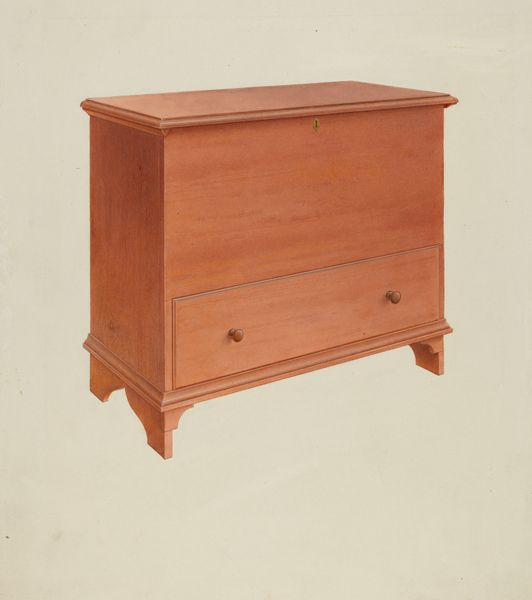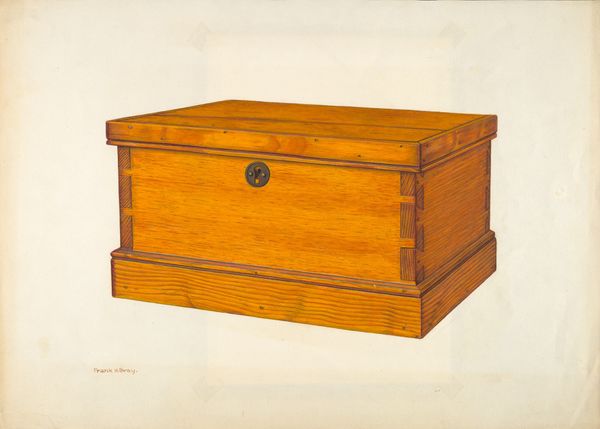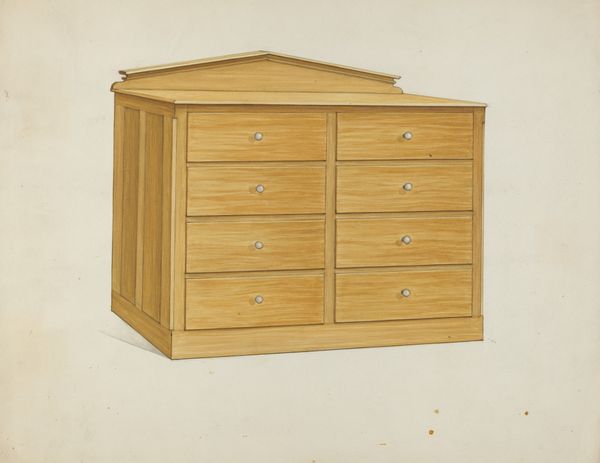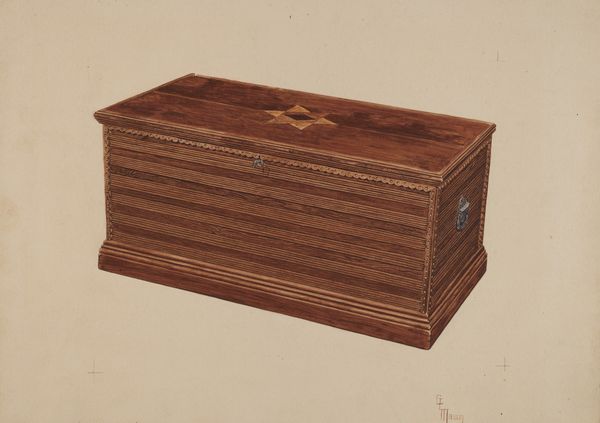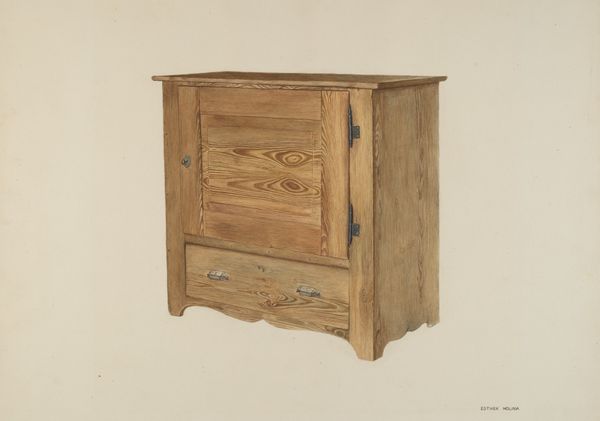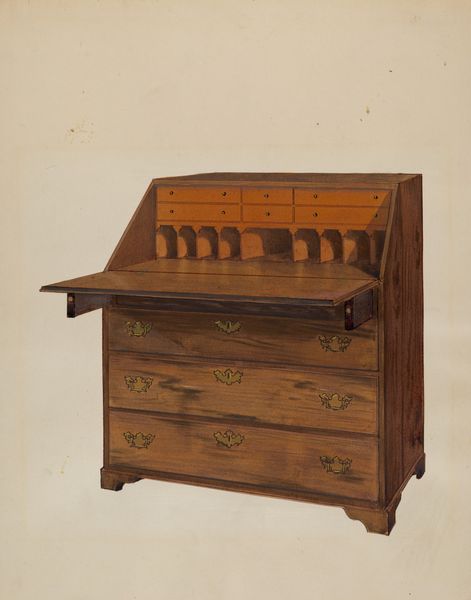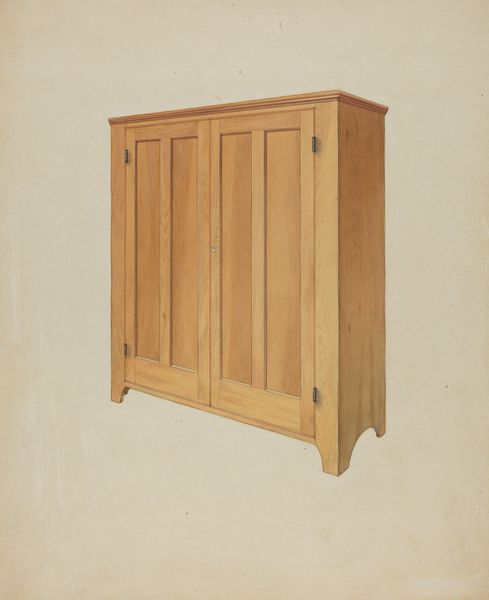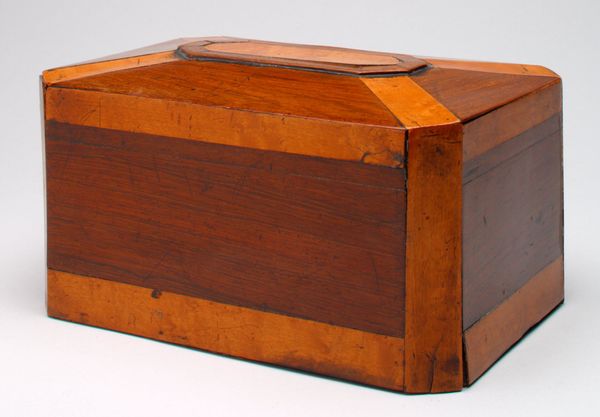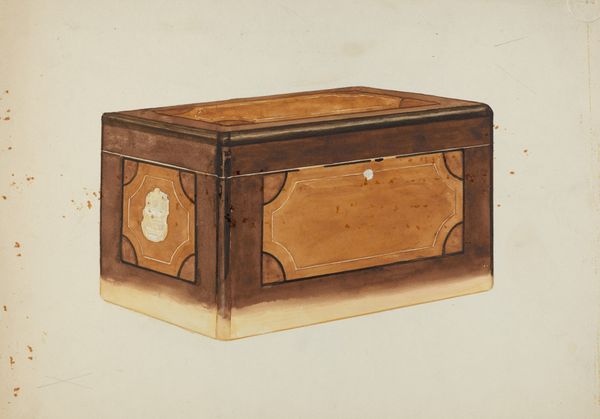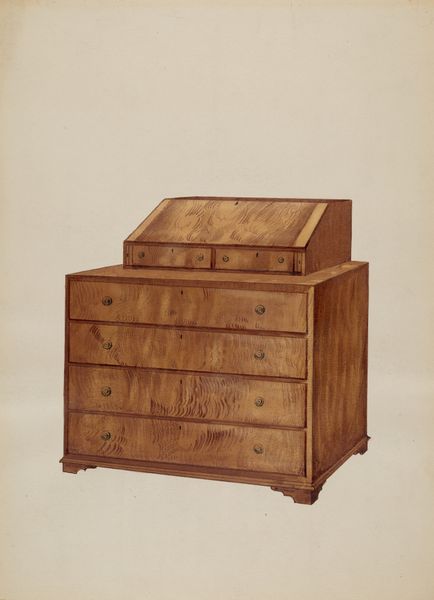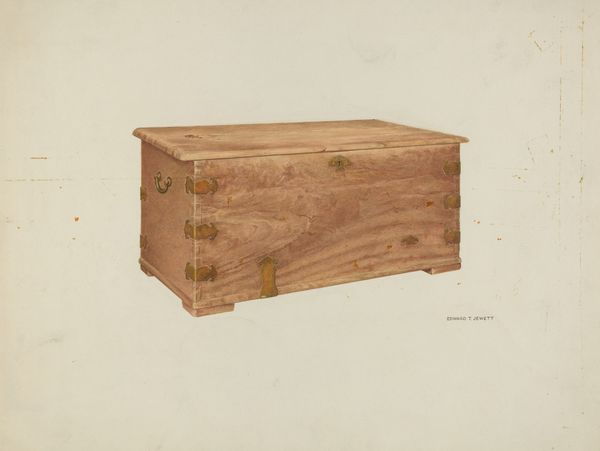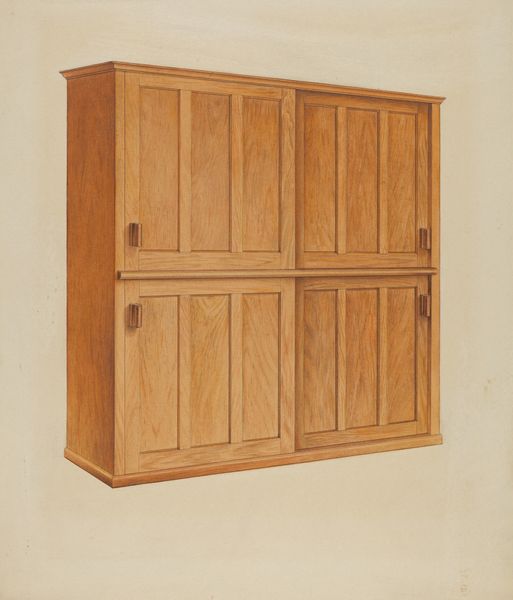
drawing, pencil, wood
#
drawing
#
pencil
#
wood
#
watercolor
#
realism
Dimensions: overall: 17.5 x 25.2 cm (6 7/8 x 9 15/16 in.) Original IAD Object: 25" high; 37" wide; 18" deep
Copyright: National Gallery of Art: CC0 1.0
Curator: Let’s spend some time with this drawing titled “Shaker Chest,” rendered around 1936 by Ray Holden. The primary medium appears to be pencil, with possible watercolor washes. Editor: There's an undeniable serenity in the quiet geometry of this chest. Its boxy form, rendered in soft shades, invites contemplation. Curator: Indeed. Observe how Holden utilizes precise, clean lines to define the object's edges and structure. The tonal gradations suggest an almost ethereal lightness, contrasting with the utilitarian purpose such a chest would serve. The light source, seemingly from above and to the left, creates subtle shadows that accentuate its three-dimensional form. Editor: The materiality speaks volumes to me. You have the sense of simple joinery, unvarnished surfaces meant for daily utility. You can imagine the hands that shaped it, and the textures of the wood, humble but incredibly enduring. Is that light-colored wood…pine, perhaps? Curator: It’s difficult to ascertain the exact wood species from the drawing itself, but the light tone does suggest pine or a similarly pale wood. The formal emphasis on its planar surfaces and right angles certainly echoes the Shaker aesthetic. The simple, triangular escutcheon adds a touch of elegant functionality, breaking up the large plain space. Editor: Absolutely, that restraint. It also reflects their social values: simplicity, utility, integrity. The emphasis isn't on embellishment, but honest construction, efficient use of material, all part of a bigger world of craft, of the work of making something real and useful. Curator: A fine interpretation. The composition draws our eye towards its balanced symmetry. Each visual element is carefully considered and proportionally related. Editor: Examining this artwork, I recognize not just a representation but a reverence for the handmade, where function dictated the form, so subtly but assuredly presented here. Curator: It serves as a contemplative study on the harmonious relationships of form, light, and line. Editor: Leaving me reminded of art’s power to reveal depth in the most seemingly straightforward, crafted objects.
Comments
No comments
Be the first to comment and join the conversation on the ultimate creative platform.
